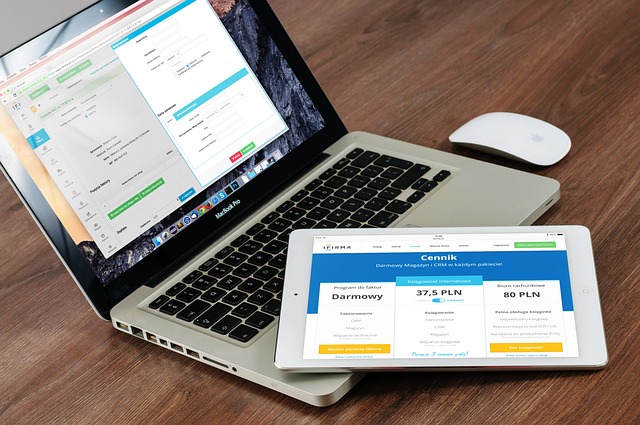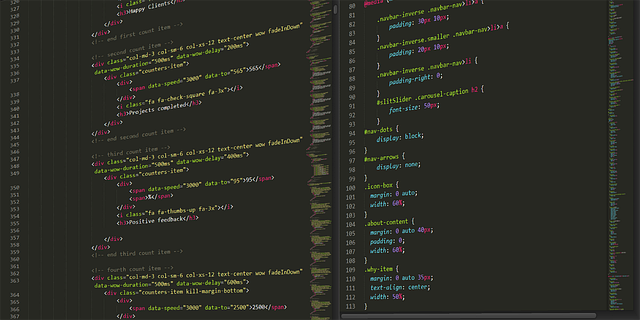Is Microsoft Excel used as a Customer Relationship Management (CRM) tool? What elements make it a feasible choice for CRM? And does it adequately fulfill the diverse needs of a modern business’s CRM? These questions and more beckon us towards a discerning analysis of Excel’s positional role as a CRM tool in today’s fast-paced business landscape.
A prevailing issue found in a number of business circles delineates the potential limitations of Excel when it comes to serving as a CRM tool. According to experts like Anish Kharade from Datanova (2021), while Excel has its strengths, its functionality may not meet all CRM requirements for modern businesses. Respected researchers like Bachnik (2018) have indicated that businesses that employ Excel alone for their CRM could face issues in terms of limited functionalities and potentially consequential data redundancy. Therefore, it becomes pivotal to propose a solution where Excel is utilized optimally without compromising on any business-critical CRM element.
In this article, you will gain a comprehensive understanding of the capabilities and limitations of Excel as a CRM tool in contemporary business operations. It will shed light on both the traditional and innovative uses of Excel – exploring if and how it can be an effective CRM tool by understanding the nuances linked with its usage.
The heart of the matter lies not in completely negating Excel as a CRM tool, but understanding the strategic enhancements that can potentially bolster its effectiveness in this role. We draw from the best minds and the most innovative perspectives, so gear up for an insightful journey towards decoding the relevance of Excel as a CRM tool in the modern business world.

Understanding the Definitions: Excel and CRM Tools
Microsoft Excel is a spreadsheet program that allows users to store, organize, and manipulate data. It is extensively used in businesses for different tasks like accounting, data analysis, and project management among others.
On the other hand, CRM (Customer Relationship Management) tools are specialized software or platforms designed to streamline, simplify, and improve the interactions and relationships between a business and its customers. CRM tools can track customer interactions, organize customer information, and manage sales and marketing efforts.
Although Excel can potentially be adapted with significant effort to perform some CRM-like functions, it technically isn’t a CRM tool. CRM tools offer much broader capabilities specifically tailored for managing customer relationships.
Unveiling the Unexpected: Excel as a Surprising CRM Tool
Understanding Excel as a CRM Alternative
Many perceive Excel as a simple data management and numerical calculation tool. However, its capabilities extend beyond simple number crunching. When used to its full potential, Excel offers powerful features that rival those in dedicated Customer Relationship Management (CRM) systems, making it a potential CRM solution.
Business enterprise applications
Microsoft 365 Apps for Enterprise
Enterprise Business apps generator
Undeniably, traditional CRM tools come with in-built functionalities specifically designed for customer interactions, data tracking, and marketing automation. However, small businesses and startups may find these systems cost-prohibitive or overwhelmingly complicated. That’s where Excel steps in, providing a cost-effective, customizable, and flexible alternative. By implementing rigorous data control practices and using sophisticated functions and formulas, organizations can transform Excel into a functional CRM tool.
Leveraging Excel’s Powerful Features for CRM
Excel possesses rich and diverse features that contribute greatly to customer relationship management. Its data analysis and visual representation tools, like pivot tables, charts, and graphs, allow businesses to track customer interactions, engagement levels, and satisfaction rates. The conditional formatting feature, on the other hand, enables quick identification of important data points, such as high-value customers or pending follow-ups.
Further, Excel’s vast array of formulas enables the automation of data-related tasks. This, coupled with its integration capabilities with other Microsoft programs, allows users to send marketing emails, schedule appointments, or share customer data with the team directly from Excel.
Lastly, Excel’s customizable nature means businesses can tailor their CRM system to their unique needs, a feature which most traditional CRM tools lack. By doing this, they can ensure that their CRM system includes relevant fields and sections, thus avoiding unnecessary complexity.
- Data Analysis and Visual Representation: Excel’s pivot tables, charts, and graphs aid in tracking and understanding customer interactions and behavior.
- Conditional Formatting: This feature allows for the easy identification of critical data points.
- Formulas and Integration Capabilities: Excel’s wide range of formulas automate data-related tasks and its integration with other resources seamlessly streamline operations.
- Customizable Features: The flexibility to adapt the CRM system to specific needs minimizes complexity and enhances usability.
In conclusion, Excel, despite not being a traditional CRM tool, can function as an effective CRM solution when utilized to its full potential. Leveraging its powerful features for customer relationship management empowers businesses with a flexible, customizable, and cost-effective tool. However, it’s worth noting that while using Excel, rigorous data management and control practices must be in place to ensure data accuracy and reduce the risk of errors.
Daring to Defy: Excel Outstretching Its Boundaries to Be a CRM Tool
Excel as an Unconventional CRM Tool
Is it conceivable to think of Excel as a relationship management tool, particularly in customer relations management? Indeed, Excel is generally known as a software that enables accounting, computation, and data interpretation. However, when exploited to its full capabilities, Excel can transform from a mundane office tool to a potent customer relationship management (CRM) aid. In essence, Excel’s advanced features such as pivot tables, cell formatting, conditional formatting formula, and charts can be manipulated to track client interactions, monitor sales, and predict consumer behaviour patterns.
Obstacles in Deploying Excel as a CRM
Nonetheless, there are challenges in adopting Excel as a CRM tool. A primary obstacle lies in the nature of Excel, which was not originally designed for CRM purposes. Thus, it lacks in built-in features like contact management, ticket support, and team collaboration that are typically found in conventional CRM solutions. Another significant hurdle is data integrity. As Excel relies heavily on manual data input, the risk of human error leading to incorrect data is high. Additionally, Excel’s broad functionality can make it complex and overwhelming, restricting its usability to only those who possess a substantial knowledge of its functions and formulas.
Maximizing Excel’s Potential for CRM
Nevertheless, businesses are finding creative ways in overcoming these challenges and harnessing Excel’s potential as a CRM tool. For example, some businesses have developed intuitive spreadsheets with easy to fill out fields for contact information, sales, and interactions to ensure comprehensive data collection. Using Excel’s conditional formatting feature, they are also able to flag high priority clients or statuses. Excel’s powerful visualization tools, such as graphs and pivot tables, have been utilized for sales forecasting and customer behaviour analysis. Lastly, the issue of data integrity and complexity has been addressed through comprehensive training programs or simply outsourcing the task to experts. Thus, while unconventional, it is feasible to leverage on Excel’s variability to create a unique, tailor-made CRM system.
Behind the Scenes: Transforming Excel into a Mighty CRM Tool
Is Excel Really a Potential CRM Tool?
Before delving into the surprising capabilities of Excel, it’s essential to consider what we traditionally think of when it comes to Customer Relationship Management (CRM) tools. Isn’t CRM software supposed to be those sophisticated systems that allow businesses to manage relationships and interactions with potential and current customers? How does Excel, a commonplace spreadsheet program, fit into this picture? It turns out; this ubiquitous application possesses some unsung features that make it a viable, albeit unconventional, contender for a CRM tool.
Pitfalls of Traditional CRM Systems: Where Does Excel Come In?
Despite their many advantages, traditional CRM systems come with significant drawbacks. They can often be expensive, complex, and fail to match the unique business process of some organizations, especially small businesses. This is where Excel steps in. Known widely as a powerful calculation tool, Excel has continuously evolved to offer features for data recording and tracking, sorting, and even data analysis – functions that are foundational to any CRM tool.
Moreover, Excel provides a flexibility rarely seen in specialized CRM systems. It allows businesses to create custom spreadsheets tailored to their specific needs. Businesses can compile an array of data points precisely relevant to their operations, nurtured leads, potential prospects, or vital KPI’s. While Excel may not have inbuilt customer-focused capabilities like traditional CRM software, it definitely provides a user-friendly platform for businesses to create their own CRM-esque workflows.
How Businesses Successfully Adapt Excel as a CRM
Let’s look at some instances where Excel has been effectively adapted as a CRM. Small businesses, notably startups, are a great example. They stand to benefit immensely from the minimal investment and customizable nature of Excel. A small firm could set up a simple table to track contact information, interactions, and potential leads against sales goals. For individuals in these small enterprises, this approach can work wonderfully in managing their customer engagement without incurring the cost of traditional CRM software.
Moreover, large organizations with a considerable workforce can use Excel for internal tracking and resource management. They can create robust, interlinked spreadsheets to record each interaction that their sales or customer service team has with a customer. By equipping the spreadsheet with time-stamped notes, dates for follow-ups, and color-coded statuses, such organizations can enjoy CRM-style benefits.
Despite Excel not being your typical CRM software, its widespread availability coupled with its customization capabilities make it an unexpected contender in the CRM realm. However, it’s essential to realize that while Excel can fill certain CRM gaps, it may not entirely replace the need for a dedicated CRM system, especially for larger, more complex organizations.
Conclusion
Could Microsoft Excel possibly be the elusive CRM tool you’ve been in search of? It’s a compelling question that requires delving into the layers of its functionality. While Excel does offer data management features and an array of numerical manipulation tools, it isn’t technically labeled a CRM tool. Its major limitations lie in its inability to manage customer relationships interactively and respond to customers’ behavior and feedback. Furthermore, its lack of user-friendly interfaces makes it less ideal for managing customer relations compared to actual CRM tools like Salesforce or Zoho CRM.
Do you love diving into the tech world, unravelling the complexities, and learning new, helpful tips for your business needs? If so, make sure to stick with us. Regular follow-up with our blog is your invitation to a wealth of knowledge. We keep our fingers on the pulse of technological advancements and practical solutions to business needs. There’s something in store for you in each of our new releases.
Anticipating our next articles should be marked in your calendars! We have a line-up of insightful pieces, all developed with attention to detail, accuracy of information, and the fresh perspective you’ve come to expect from us. Waiting for new releases might test your patience, but we assure you, it is worth the wait. Unveiling newly explored tech facets and bringing fresh information to your table, that’s what we aim for with our future content. Hang with us, and you surely won’t be disappointed!
F.A.Q.
FAQ
Can Excel be used as a CRM tool?
Technically, you can use Excel as a rudimentary Customer Relationship Management (CRM) tool. However, it lacks many of the features of a dedicated CRM system such as integrating with other digital platforms, tracking interactions, and automating tasks.
What limitations does Excel have as a CRM tool?
Excel lacks native CRM features like linking related records, history tracking, and sales forecasting. It also misses out on automation features such as email reminders or scheduling follow-ups that are typical of a CRM system.
Why is a dedicated CRM generally preferred over Excel?
Dedicated CRM tools are designed to manage customer relationships, offering more advanced features and better data management. They allow for integration with other platforms such as social media or email marketing, which is not possible with Excel.
What are some key features in CRM systems that Excel lacks?
Excel lacks CRM-specific capabilities such as task automation, easy access to customer interaction history, and integration with other business tools like email marketing platforms or social media. Additionally, CRM systems generally offer superior data analytics tools.
Can Excel be a good starting point for small businesses that can’t yet invest in a CRM system?
Excel can serve as a temporary solution for very small businesses to keep track of their customer data. However, as the business grows, the limitations of Excel will quickly become apparent and investing in a dedicated CRM system can offer more advanced capabilities to manage customer relations.


